The 1935 Buffalo Nickel value ranges from $0.50 to $20 for circulated coins, while uncirculated specimens can reach $25,000 or more. Coins without mint marks were minted in Philadelphia. Denver (D) and San Francisco (S) mint marks typically command higher values. Condition is the most critical factor determining worth. Rare errors like double die reverses, especially doubling on “FIVE CENTS” letters, significantly increase value. To assess your coin: inspect for wear and damage, look for doubling on lettering, and consult professional grading services for authentication. High-grade coins and those with verified errors are worth substantially more than common circulated examples.
That worn nickel sitting in your grandfather’s coin jar might be worth more than pocket change. The 1935 Buffalo Nickel represents one of the final years of this iconic American design, and certain examples command serious money from collectors. With values ranging from 50 cents for heavily circulated pieces to over $25,000 for pristine specimens, understanding what makes your 1935 nickel valuable could mean the difference between spending it and securing a significant payday.
Understanding the 1935 Buffalo Nickel’s Market Position
The 1935 Buffalo Nickel marks the penultimate year of James Earle Fraser’s beloved design featuring a Native American profile on the obverse and an American bison on the reverse. Three mints produced these five-cent pieces: Philadelphia (no mint mark), Denver (D), and San Francisco (S). Production numbers varied significantly across facilities, with Philadelphia striking 58,264,000 pieces, Denver producing 12,092,000, and San Francisco minting just 10,300,000 coins.
These production figures directly impact today’s market values. The Philadelphia issue, despite its higher mintage, actually maintains steady collector demand due to condition rarity. Most 1935-P nickels entered heavy circulation, making high-grade survivors scarce. Meanwhile, the lower-mintage Denver and San Francisco issues command premiums even in average condition.
Philadelphia Mint Values: No Mint Mark Specimens
The 1935 nickel without a mint mark originates from the Philadelphia Mint. Here’s what these coins typically fetch in today’s market:
| Grade | Condition Description | Market Value |
|---|---|---|
| Good-4 | Heavy wear, date readable | $0.50 – $1.00 |
| Fine-12 | Moderate wear, some detail visible | $1.50 – $2.50 |
| Extremely Fine-40 | Light wear on high points | $8.00 – $12.00 |
| About Uncirculated-50 | Slight wear on highest points | $15.00 – $20.00 |
| MS-60 | Uncirculated with contact marks | $35.00 – $45.00 |
| MS-63 | Choice uncirculated, minimal marks | $75.00 – $110.00 |
| MS-65 | Gem quality, excellent eye appeal | $225.00 – $375.00 |
| MS-67 | Superb gem, exceptional quality | $3,500 – $8,000 |
| MS-68 | Top population, museum quality | $25,000+ |
According to Heritage Auctions records from 2023, a 1935 Philadelphia Buffalo Nickel graded MS-67 by Professional Coin Grading Service sold for $6,462, while an exceptional MS-68 specimen brought $27,600 at auction. These premium grades are extraordinarily rare because most 1935-P nickels endured decades of circulation before collectors recognized their numismatic potential.
The key to value lies in the horn detail on the buffalo and the date visibility. Circulated examples often show significant wear on these high-relief areas, which is why even mid-grade specimens in Extremely Fine condition can command $10 or more.
Denver Mint Specimens: The “D” Mint Mark
Denver-minted 1935 Buffalo Nickels carry a small “D” beneath the words “FIVE CENTS” on the reverse. With less than one-fifth the production of Philadelphia nickels, these coins maintain stronger base values across all grades:
| Grade | Market Value |
|---|---|
| Good-4 | $1.50 – $2.00 |
| Fine-12 | $3.00 – $4.50 |
| Extremely Fine-40 | $18.00 – $25.00 |
| About Uncirculated-50 | $28.00 – $38.00 |
| MS-60 | $65.00 – $85.00 |
| MS-63 | $140.00 – $190.00 |
| MS-65 | $550.00 – $850.00 |
| MS-67 | $12,000 – $18,000 |
A 1935-D graded MS-66 sold for $4,230 through Stack’s Bowers in January 2024, demonstrating the strong collector demand for high-grade Denver specimens. The 1935-D particularly appeals to type set collectors who need one example of each mint mark to complete their Buffalo Nickel collection.
Interestingly, 1935-D nickels often exhibit sharper strikes than their Philadelphia counterparts, especially on the bison’s fur detail and the Native American’s feather details. This superior strike quality means properly preserved examples can achieve higher grades more readily, though truly gem-quality pieces remain elusive.
San Francisco Mint Rarities: The “S” Mint Mark
The 1935-S Buffalo Nickel represents the scarcest regular issue of the year with only 10.3 million struck. The “S” mint mark appears in the same location as the “D” beneath “FIVE CENTS.” These coins command the highest premiums among standard 1935 issues:
| Grade | Market Value |
|---|---|
| Good-4 | $1.50 – $2.25 |
| Fine-12 | $3.50 – $5.00 |
| Extremely Fine-40 | $22.00 – $32.00 |
| About Uncirculated-50 | $40.00 – $55.00 |
| MS-60 | $95.00 – $125.00 |
| MS-63 | $195.00 – $265.00 |
| MS-65 | $725.00 – $1,100 |
| MS-67 | $15,000 – $22,000 |
The finest known 1935-S Buffalo Nickel, graded MS-67+ by PCGS, realized $32,900 at a Heritage Auctions sale in April 2023. Only a handful of specimens have achieved the MS-67 grade level, with the vast majority of surviving examples showing at least moderate circulation wear.
San Francisco nickels from this era typically display softer strikes than Denver or Philadelphia issues, particularly on the buffalo’s head and the ground line beneath the animal. This characteristic makes locating sharply struck, high-grade examples extraordinarily challenging, which explains the dramatic price jumps at gem quality levels.
Valuable Error Varieties Worth Searching For
Beyond mint mark variations, several error types can dramatically multiply a 1935 Buffalo Nickel’s value. The most significant error variety is the doubled die reverse, where mechanical doubling occurred during the die creation process.
1935 Doubled Die Reverse (DDR): The most pronounced doubling appears on the words “FIVE CENTS” and “E PLURIBUS UNUM.” On strong examples, you’ll notice clear separation between the primary and secondary images, creating a shadowed or echo effect visible to the naked eye. A 1935-P DDR in MS-64 condition sold for $1,840 in 2023 through GreatCollections, while circulated examples in Fine condition still fetch $75 to $150.
The key diagnostic for authentic doubled dies is the direction and consistency of the doubling. Machine doubling from loose dies shows a flat, shelf-like appearance, while true doubled dies display rounded, three-dimensional separation. Under 10x magnification, examine the serifs on the letters “E” in “FIVE” and “CENTS” for the clearest indicators.
Three-Legged Buffalo Error: While the famous three-legged variety primarily appears on 1937-D nickels, some 1935 specimens show partial leg weakness due to excessive die polishing. These aren’t true three-legged errors but can still command $20 to $50 premiums in circulated grades if the weakness is dramatic.
Off-Center Strikes: Planchet feeding errors resulted in some 1935 nickels being struck off-center. Values depend on the percentage off-center and whether the date remains fully visible. A 10% off-center strike with full date typically brings $100 to $200, while 25% off-center examples can reach $400 to $600. A dramatic 50% off-center 1935-D sold for $1,265 in 2022, though such extreme examples are exceptionally rare.
Repunched Mint Marks: On Denver and San Francisco issues, occasional mint marks show doubling where the punch was applied twice in slightly different positions. Significant repunched mint marks add $25 to $100 to a coin’s base value depending on grade and dramatic visibility of the repunching.
Grading Your 1935 Buffalo Nickel Accurately
Understanding grading standards helps you assess your coin’s potential value before seeking professional certification. The Sheldon Scale runs from 1 to 70, with specific benchmarks determining price categories.
Good-4 to Very Good-8: The date and lettering remain readable, but the buffalo appears as a flat silhouette with no horn detail visible. The Native American’s features are worn smooth, with only basic outlines distinguishable. These heavily circulated pieces represent the bulk of surviving 1935 nickels.
Fine-12 to Very Fine-20: Moderate detail emerges on the buffalo’s head, with partial horn definition visible. The Native American’s hair shows individual strand separation, and “LIBERTY” appears complete though possibly weak. Most casual collectors encounter 1935 nickels in this grade range.
Extremely Fine-40 to About Uncirculated-50: Light wear appears only on the highest points—the buffalo’s hip and shoulder, the Native American’s cheekbone, and the braid end. Full horn definition shows, and all design elements are sharp. These pieces often resided in collections shortly after minting.
Mint State (MS-60 to MS-70): No wear appears anywhere on the coin, though contact marks, bag marks, and luster quality determine specific numerical grades within the Mint State category. MS-60 to MS-62 coins show numerous contact marks and possibly compromised luster. MS-63 to MS-64 specimens display better surface preservation with fewer distracting marks. MS-65 and higher represent premium quality with exceptional eye appeal, sharp strikes, and minimal surface disturbances.
The buffalo’s horn serves as the primary focal point for grading. On true Mint State coins, the horn shows complete, unbroken detail from base to tip. Any flatness indicates wear, immediately dropping the coin below MS-60 regardless of other characteristics.
Where to Sell Your Valuable 1935 Buffalo Nickel
Once you’ve identified a potentially valuable 1935 nickel, several selling venues offer different advantages. For coins worth under $50 in circulated condition, local coin shops provide immediate payment without shipping risks or fees. Expect offers at 60% to 75% of retail value, as dealers need profit margin for resale.
Online marketplaces like eBay work well for coins valued between $50 and $500, particularly if you have quality photographs and accurate grade descriptions. Completed listings show that 1935 Buffalo Nickels in Extremely Fine to About Uncirculated grades consistently sell for 85% to 95% of catalog values when properly presented.
For high-grade specimens or significant error varieties worth $500 or more, professional grading becomes cost-effective. PCGS and NGC charge $20 to $40 per coin for standard service, but third-party authentication dramatically increases buyer confidence and realized prices. A raw 1935-D claimed as MS-65 might sell for $400, while the same coin in a PCGS MS-65 holder readily brings $750 to $850.
Major auction houses like Heritage, Stack’s Bowers, and GreatCollections specialize in certified coins valued over $1,000. These firms charge seller’s commissions of 10% to 20% but provide access to serious collectors willing to pay premium prices for exceptional quality. The auction format also creates competitive bidding that can push final prices above conservative estimates.
Protecting and Preserving Your Collection Investment
Improper storage destroys more coin value than any other factor under collector control. Never clean your 1935 Buffalo Nickel, regardless of how dirty it appears. Collectors prize original surfaces with natural toning, and even gentle cleaning creates microscopic scratches that reduce grades and values by 30% to 50%.
Store nickels in non-PVC holders specifically designed for coin preservation. Cheap plastic flips containing polyvinyl chloride leach chemicals that create green corrosion on nickel surfaces over time. Quality Mylar holders cost slightly more but prevent chemical damage indefinitely.
Handle coins by their edges only, avoiding contact with obverse and reverse surfaces. Skin oils contain acids that etch copper-nickel alloys, creating fingerprint-shaped toning that becomes permanent within days. Cotton gloves provide extra protection when examining valuable specimens.
Environmental control matters especially for high-grade Mint State coins. Store your collection in stable temperature and humidity conditions, ideally 65-70°F with 40-50% relative humidity. Extreme fluctuations promote toning development that can diminish eye appeal and grades on pristine white coins.
Building Your Buffalo Nickel Strategy
Whether you’re evaluating inherited coins or actively building a collection, focus your attention on quality over quantity. A single 1935-S in MS-64 condition provides better long-term appreciation potential than twenty heavily circulated examples from all three mints.
Start by examining every 1935 nickel you encounter for the doubled die reverse variety. This significant error appears across all three mints, though the Philadelphia issue shows the most dramatic examples. Even worn Good-4 specimens with strong doubling command $50 to $75, making them worthy additions to any error coin collection.
Consider submitting borderline high-grade coins for professional certification. A raw coin you believe grades MS-63 might actually achieve MS-64 in professional hands, instantly adding $50 to $100 in value. Conversely, learning a coin grades AU-58 instead of MS-60 costs only the grading fee while preventing unrealistic price expectations.
Your 1935 Buffalo Nickel represents more than its metal content or face value—it’s a tangible connection to American numismatic history and potentially a significant financial asset. Start checking those old coin jars today.

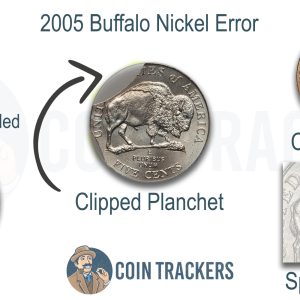
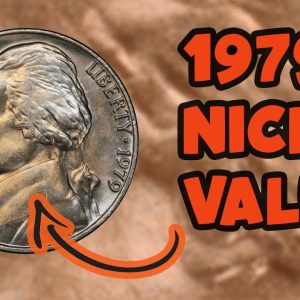
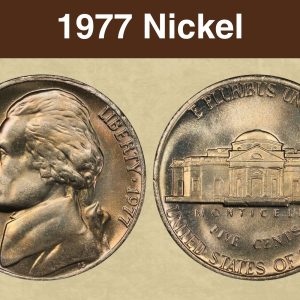
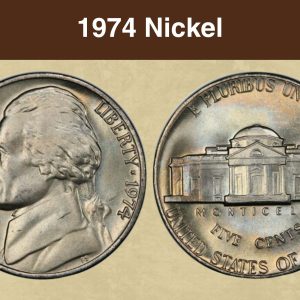
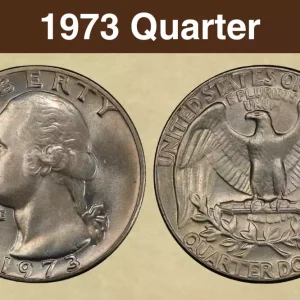
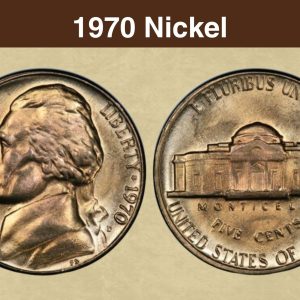
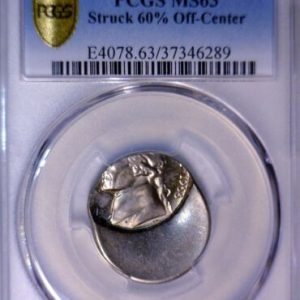
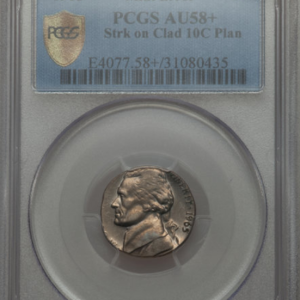
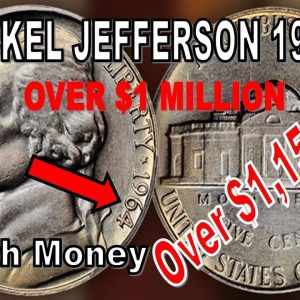
How much is a 1935 Buffalo Nickel worth with no mint mark?
A 1935 Buffalo nickel with no mint mark, which signifies it was minted in Philadelphia, typically sells for $0.50 to $20 for circulated condition and can reach $25,000 or more for uncirculated coins. The value is highly dependent on the coin’s condition (grade), with higher grades and the presence of rare doubling errors significantly increasing its worth.
What is the error on the 1935 Buffalo Nickel?
The most significant error on a 1935 Buffalo nickel is the doubled die reverse (DDR), which is valuable due to the dramatic doubling on the words “FIVE CENTS” and less prominent doubling elsewhere on the coin. Other, less common errors include lamination errors (where a layer separates from the coin’s surface) and rotated die errors, where the coin is struck at an angle. The value of any error coin depends heavily on its condition.
Where is the S or D on a Buffalo Nickel?
Over 1.2 billion Buffalo Nickels were minted from 1913 through 1938 at three mints; Philadelphia (no mintmark), San Francisco (S), and Denver (D). The mintmark can be found on the reverse under the denomination, while the designer’s initial “F” is below the date.
Where is the mint mark on a 1935 Buffalo Head nickel?
Location: On the reverse (tails) side of the coin, beneath the words “FIVE CENTS”. What to look for: No mint mark: The coin was minted in Philadelphia. D: The coin was minted in Denver. S: The coin was minted in San Francisco. No mint mark: The coin was minted in Philadelphia. D: The coin was minted in Denver. S: The coin was minted in San Francisco.